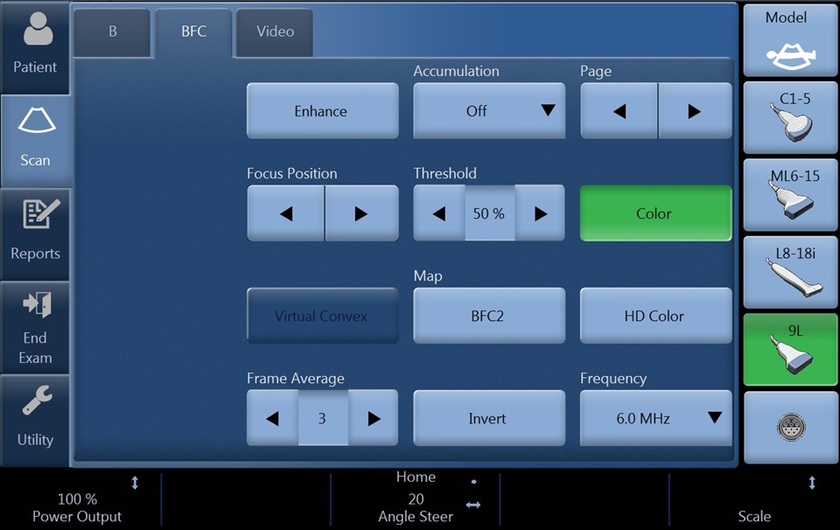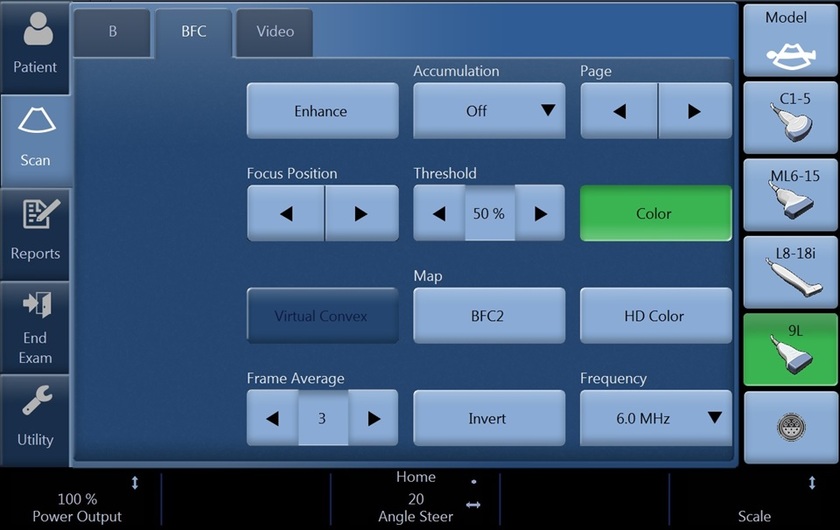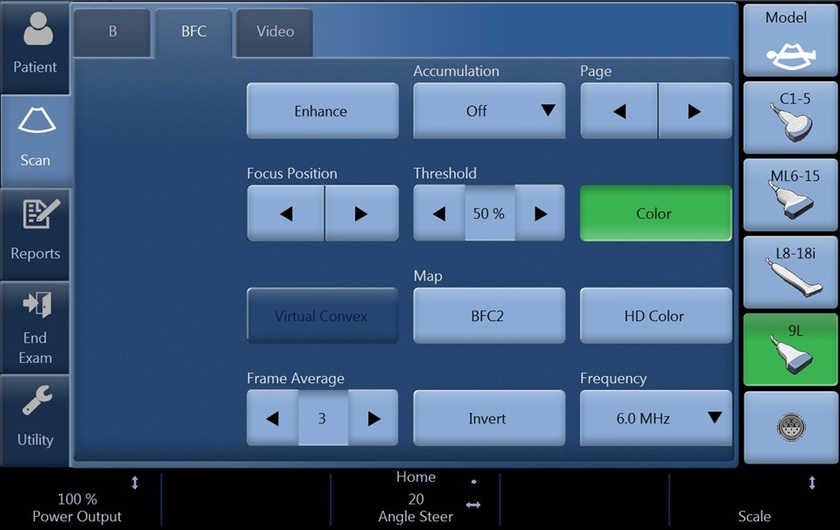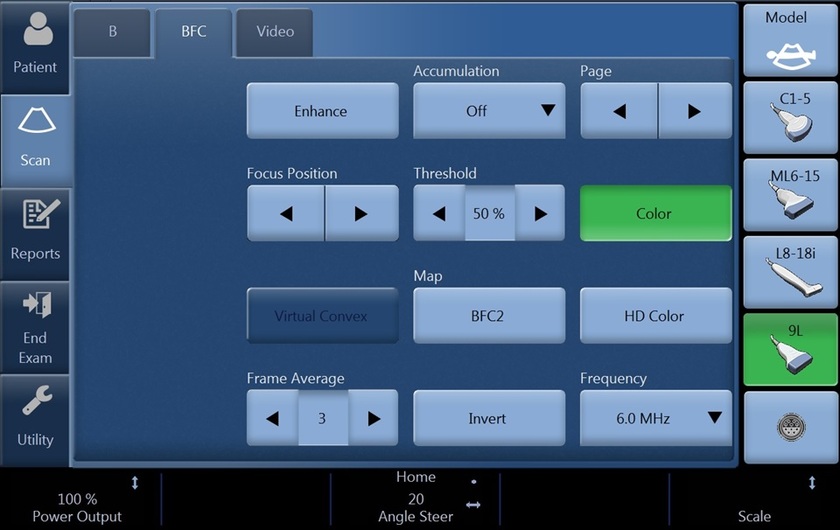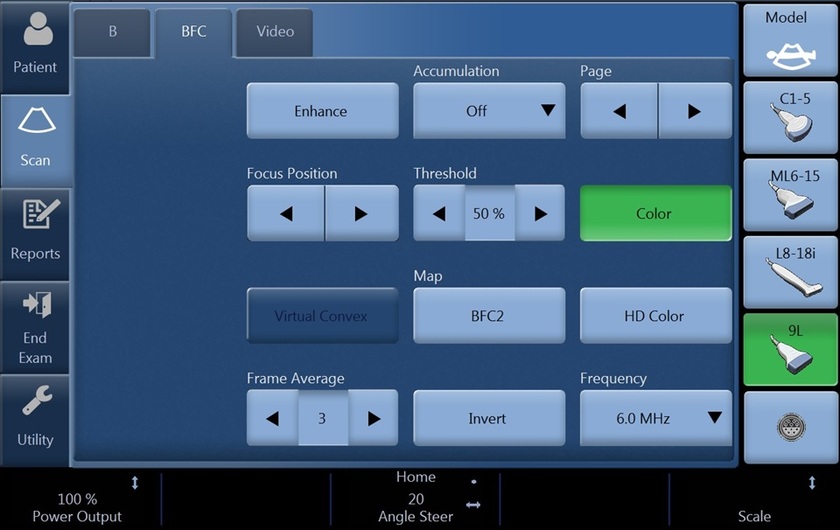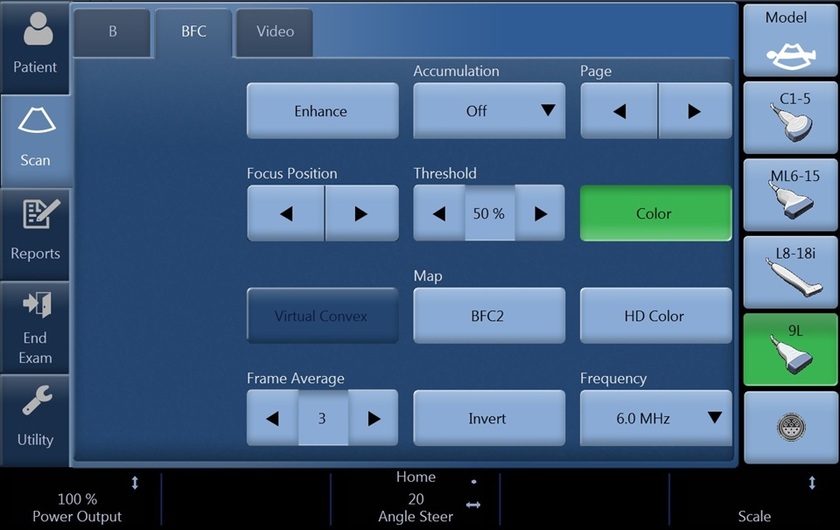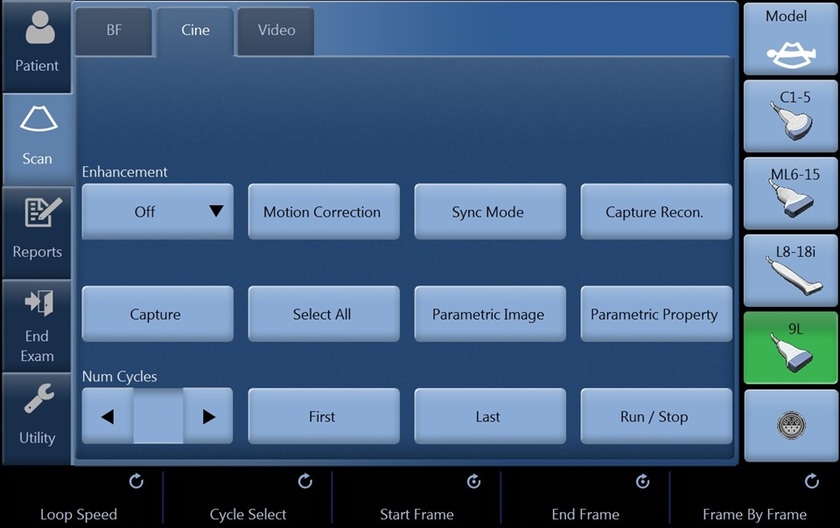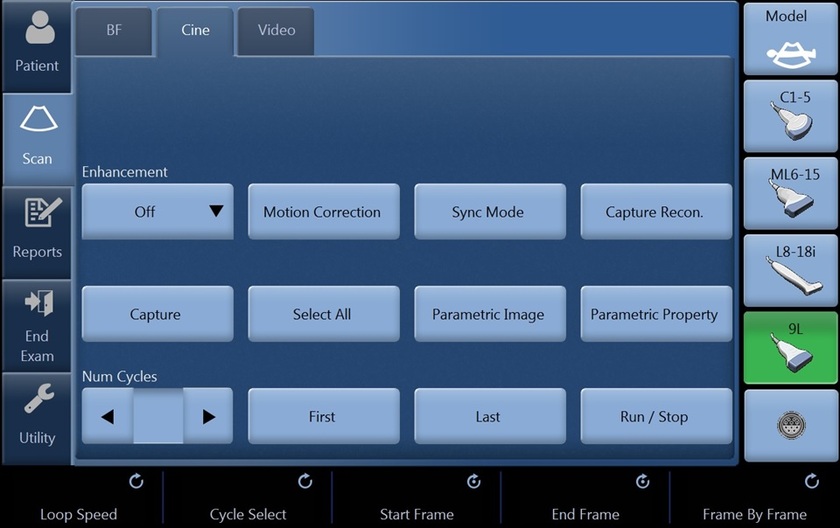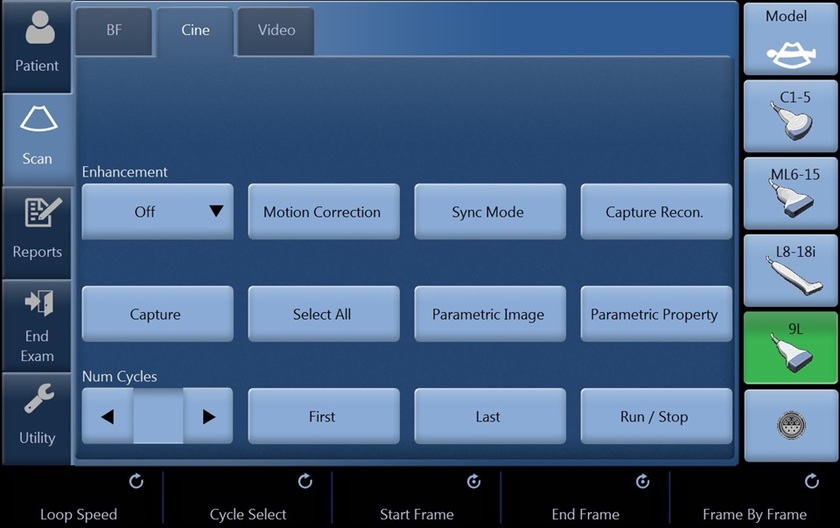My Trainer
LOGIQ S8 XDclear 2.0
-
Getting Started
-
Probe Management
-
Ergonomics
-
Utility basics
-
Connectivity
-
-
Use your system
-
Console buttons
-
Monitor
-
Touch Panel
-
Basic Exam
-
Turn off
-
-
FAQs
-
Data management
-
Cleaning
-
Maintenance
-
-
Advanced
-
B-Flow
-
SWE
-
Strain Elastography
-
V Nav
-
FibroScan
-
Contrast
-
Compare Assistant
-
Color Quantification
-
B-Flow Color
-
Digitally encoded technology; Provides a B-Flow representation with colorized flow and a clear background B-Mode image. Uses a ROI box giving the advantages of both B-Flow and Color Flow. Activation Turn on B-Flow, activate B-Flow Color by choosing “Color” on the B-Flow touch panel menu.
-
Limits of Color Doppler
• Lack of true hemodynamics representation
• Color writing on bright interfaces
• Color outside vessel wall
• Inferior spatial resolution compared to B-Mode
• ROI angle dependency
-
Advantages of B-Flow Color
• Dynamic flow appearance
• High frame rate
• Clear background tissue with vessel hemodynamics
• Less tissue motion artifact
Examples High grade stenosis, Aneurysm formation, Access graft, Organ perfusion such as renal transplant
-
Enhance Use when imaging many small vessels such as renal parenchyma. Turn off when higher frame rate is needed. Accumulation Use in slow flow states to help increase the time of optimal vessel visualization. During live scanning choose from the dropdown the fraction of a second the image will accumulate.
-
Focus position The focal zone will track with the ROI until the user selects this button. Locate the focal zone at or below the area of most interest for more consistent flow through the ROI. Frequency Select Frequency from the touch panel and select the dropdown to utilize the bandwidth of frequencies available for each transducer and mode.
-
Wall Filter Use WF3 in higher velocity flow states. WF0 to help display low flow velocities. Scale Decrease to display smaller vessels and slower flow. Increase for higher flow states to help reduce overwriting of vessel wall. HD Color On, Off
NOTE: Only available on 9L-D, L3-12-D, ML6-15-D, and C1-6-D probe.
NOTE: Triplex is not available in BF HD Color
-
Cine Capture Acquire a B-Flow or B-Flow Color clip and select Cine Capture from the cine tab on the touch panel. Cine Capture allows the user to represent the dynamic flow situation of the vasculature in a single still image or across a loop.
-
Enhancement Use to visualize parenchymal perfusion with added depth of information. The shade process allows the anterior and posterior portions of the vessel to be displayed. Shade Forward (FW) brings the first frame to the front of Cine Capture. Shade Reverse (RV) brings the last frame to the front of the Cine Capture. Enhance levels are especially useful in allowing the user to see the vessel structure built by the Cine Capture and the hemodynamics of the blood flow enhanced simultaneously.
-
Sync Mode User can select two Cine loops, recall them, and select Sync Mode to sync the loops. Image Sync can also be done on two Cine loops acquired with ECG leads. Capture Recon Frames are re-ordered in preference to the image with less noise artifact and smaller motion artifacts. When using B-Flow capture alone small weak vessels can be hidden by artifacts. The Capture Recon will reduce the appearance of artifacts and enhance the weak Vessel signals.


